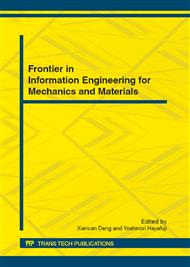p.214
p.218
p.225
p.232
p.239
p.245
p.250
p.255
p.260
Investigations on Broken Rules of the 20# Cylindrical Steel Shell under Inside-Explosion Loading
Abstract:
Broken rules of cylindrical steel shell subjected to internal blast loads is the foundation for conducting safety assessment and failure analysis of explosion containment vessels. The experiments were carried out broken rules of the cylindrical steel shells subjected to internal blast loadings at the centers. The elastic-plastic response of cylindrical steel shells was conducted using nonlinear dynamic finite element analysis code LS-DYNA. The results show that the deformation was’t a discrepancy in the explosion center of the cylindrical steel shell in same space, and the deformation descended slower along with thickness augmentation in the end of explosion center. The radial stress、hoop stress and axial stress was a discrepancy in the thickness way of cylindrical steel shell of explosion center The most leading cause of destructivity of cylindrical steel shell was that inner wall bearing normal stress and exterior wall bearing tensile stress; the hoop stress was broken more than axial stress cylindrical steel shell. The whole process was presenting hoop fractured and axial growth.
Info:
Periodical:
Pages:
239-244
Citation:
Online since:
July 2012
Authors:
Price:
Сopyright:
© 2012 Trans Tech Publications Ltd. All Rights Reserved
Share:
Citation:


